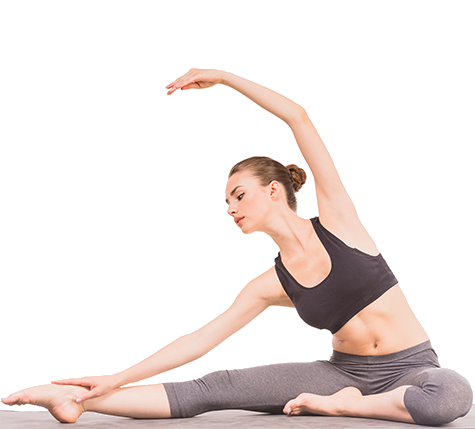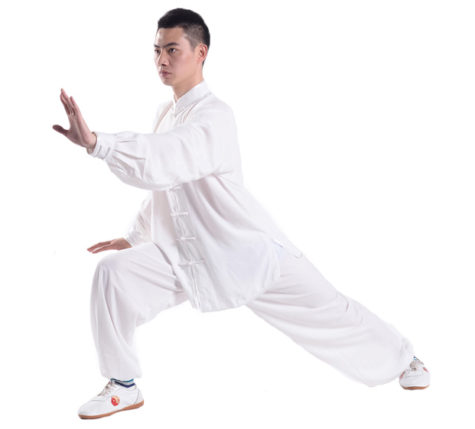
The effects of exercise on mood and well-being are powerful
There’s been a very significant shift in the way modern society functions from what was once a physically active lifestyle to a predominantly sedentary one, making awareness of the health benefits of physical exercise more important than ever. Regular exercise can help prevent or manage a wide range of health concerns and can improve every aspect of your health from the inside out.
The effects of exercise on mood are powerful — it increases the production of endorphins, producing positive feelings and reducing pain. Even moderate exercise provides antioxidant protection and promotes blood flow, protecting your skin from free radicals and delaying signs of aging. And, while for years the recommended treatment for chronic pain was rest and inactivity, new studies indicate that exercise actually helps relieve chronic pain. Scientific research also now claims that lack of exercise is one important cause of chronic diseases and that physical activity primarily prevents or delays chronic diseases.
And exercise can be fun and social — a chance to unwind, be outdoors or just do something that makes you happy. So for 150 minutes a week, dance, run, walk, hike, swim, join a sports team or, we’d like to suggest, try Yoga or Tai Chi!

YOGA
Yoga is a 5000 year old mind-body exercise. It has over 15 million followers in the U.S and is still growing. While its proven physical health benefits have contributed to its growth, the main attraction could be its mental health benefits.
It’s one of the best physical exercises for reducing stress and anxiety. Many forms of exercise will increase the release of endorphins and “feel good” neurotransmitters, but Yoga boosts GABA, gamma-aminobutyric acid, which slows down brain activity and lets you relax. When GABA production is low, your brain is stuck on “On.” A single 1 hour Yoga session increases GABA by 27%! Visit the Yoga Journal website at www.yogajournal.com for specific yoga poses for stress release.
Yoga helps build muscle strength and improve muscle tone, but unlike other forms of exercise and weight training, Yoga also builds in flexibility, so you can have strong muscles and still touch your toes!
Memory and concentration are improved as Yoga practice calls for quieting the mind and focusing in the present. There are specific Yoga poses for concentration, such as the prayer pose, the eagle, warrior 2 and Alternate Nostril Breathing which you’ll also find recommended on our Inspiration page.
Yoga lowers levels of the stress hormone, cortisol, which may help keep calcium in the bones and ward off osteoporosis by increasing bone density.
If all that isn’t enough to convince you, Yoga also lowers blood pressure, blood sugar and LDL bad cholesterol. It perfects your posture, improves your balance and at the end of the day, improves your sleep. It also builds awareness and gives you the ability to step back from the drama of your life.
For beginners, it’s recommended that you start with a Yoga class. There are many styles of Yoga and one will be just right for you. Hatha Yoga is one of the most popular and is good for beginners – it’s slow paced and the poses are relatively easy. There are Yoga poses suitable for every level.
It is believed that Yoga can lead you on a path to a healthier lifestyle. The discipline that fuels Yoga practice can be extended into other areas of your life to help you make healthy changes.

TAI CHI
Tai Chi is also a very old practice. It evolved over 2000 years ago from Qigong, a 5000 year old martial arts practice. Tai Chi is a low impact exercise made up of a slow, deliberate series of movements, meditation and breathing exercises, and is described as a form of “meditation in motion.” It’s also been called “medication in motion” by health professionals — the Mayo Clinic and Harvard Medical School recommend it for its health benefits and as a stress reduction tool.
Tai Chi harnesses and balances “chi” or life energy (called prana in Yoga) and channels it through the body’s energy meridians, improving over-all health and well-being.
Tai Chi and Yoga both seek to integrate the body, subtle energy and the mind and both emphasize stretching, breath work and chi or prana. Yoga, however, tends to use more extreme stretches and some postures lock the joints and arch the back which never happens in Tai Chi.
Tai Chi differs from other forms of exercise in that its movements are usually circular and never forced; muscles are relaxed rather than tensed; joints are not fully extended or bent; and connective tissues are not stretched. It requires no equipment or special clothing and can be done anywhere, inside or outside.
Its health benefits are many. Studies have shown it to lower stress and anxiety, induce a better mood, increase aerobic capacity, and build muscle strength (comparable to resistance training) as well as flexibility. It lowers blood pressure, improves heart health, reduces inflammation and helps with digestion and waste elimination. A new scientific study believes that the high level of attention needed for the tai chi movements increases brain volume, which tends to decrease with age, thereby lowering the risk for developing dementia or Alzheimer’s.
But the advantages of the peace that comes from the flowing meditative aspect of this practice are equally important to the other health benefits. In our stressed out world, many of us are living in a continuous state of stress without even being aware of it! Tai Chi supports the body’s natural tendency to return to balance. And when the body is in a state of balance, all systems work better.
The best way to begin a Tai Chi practice is to take a class. As an introduction, however, there is DVD instruction such as “Discover Tai Chi for Balance and Mobility” by Scott Cole. There are also Apps – Tai Chi Lite or Tai Chi Yang.
